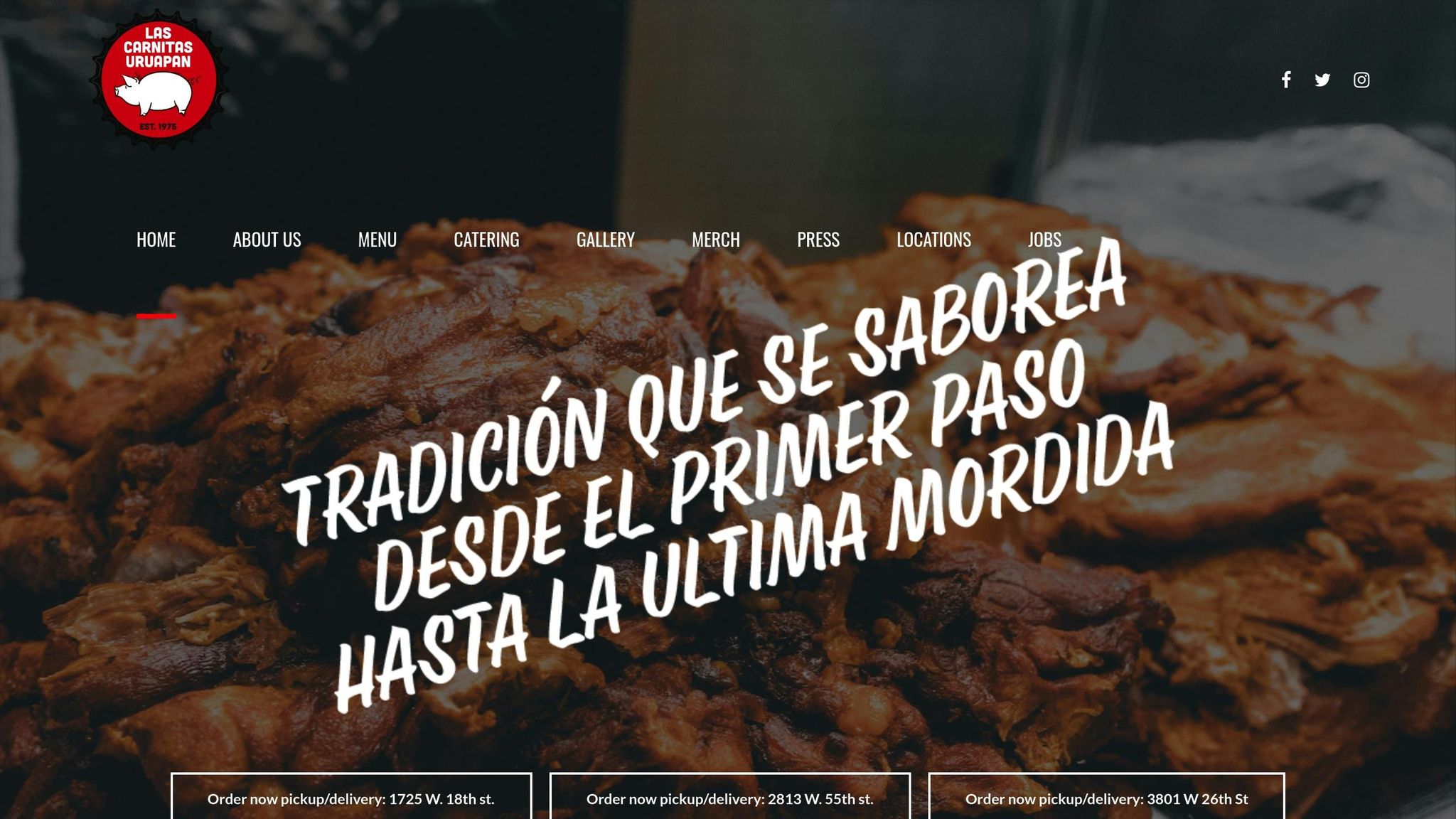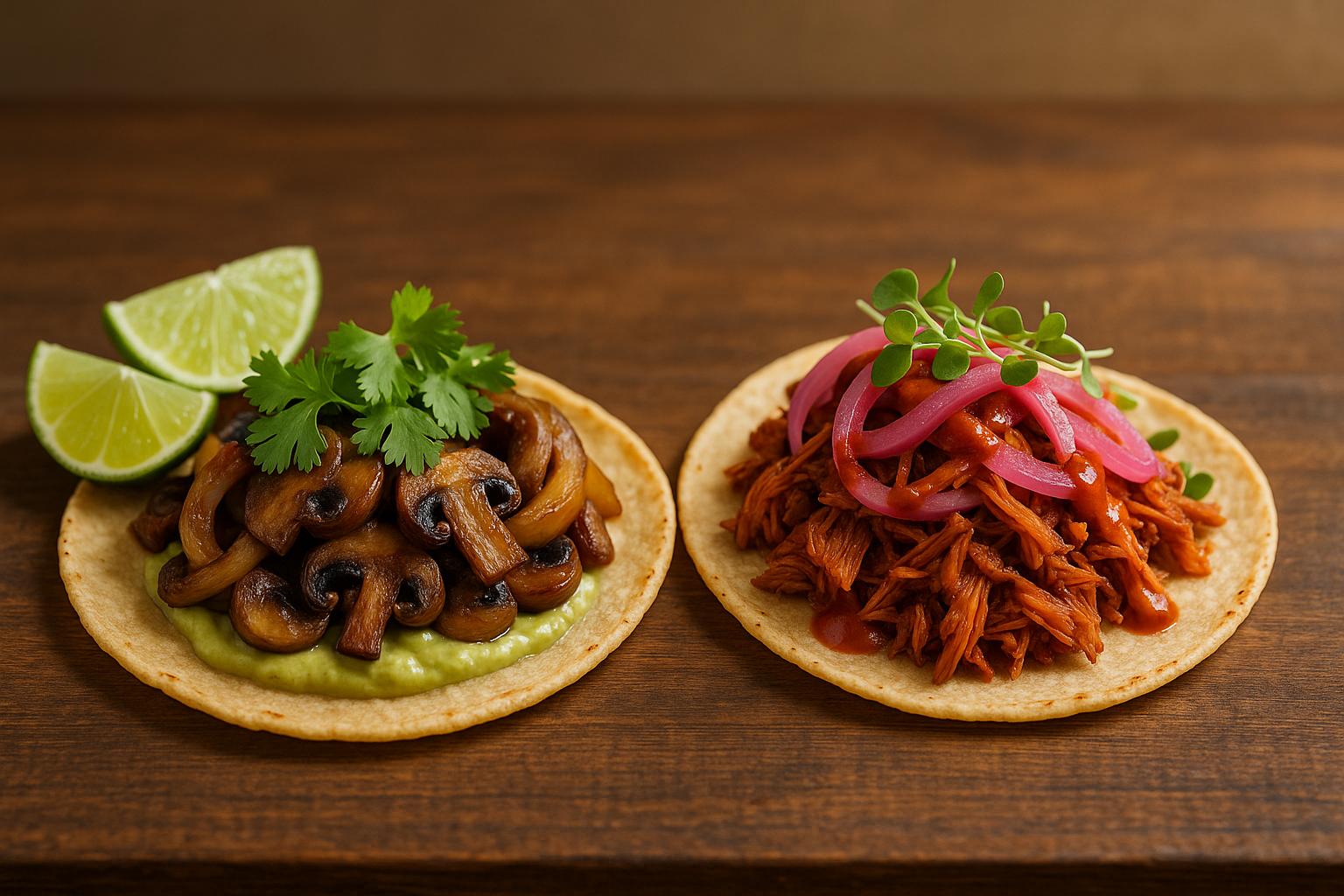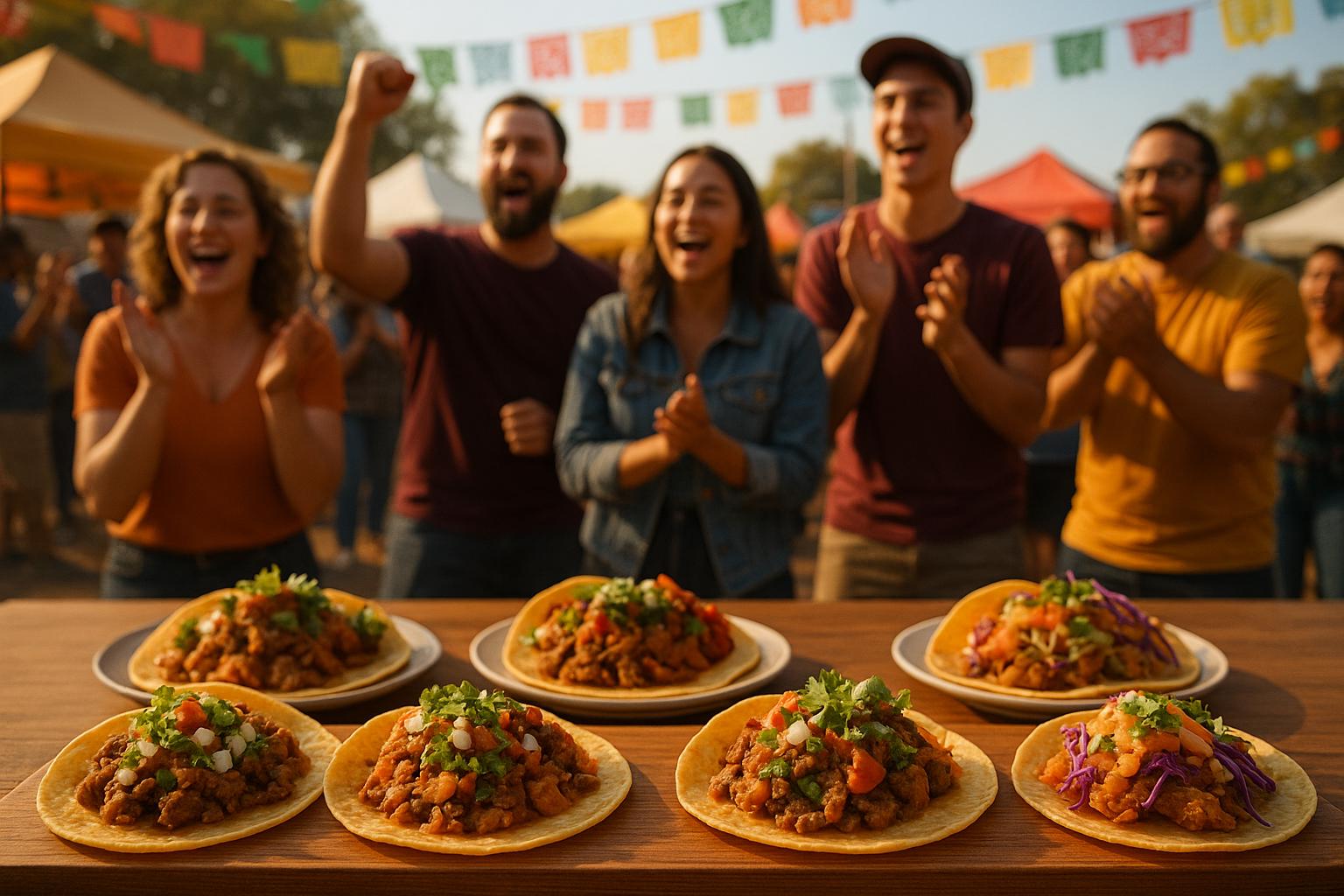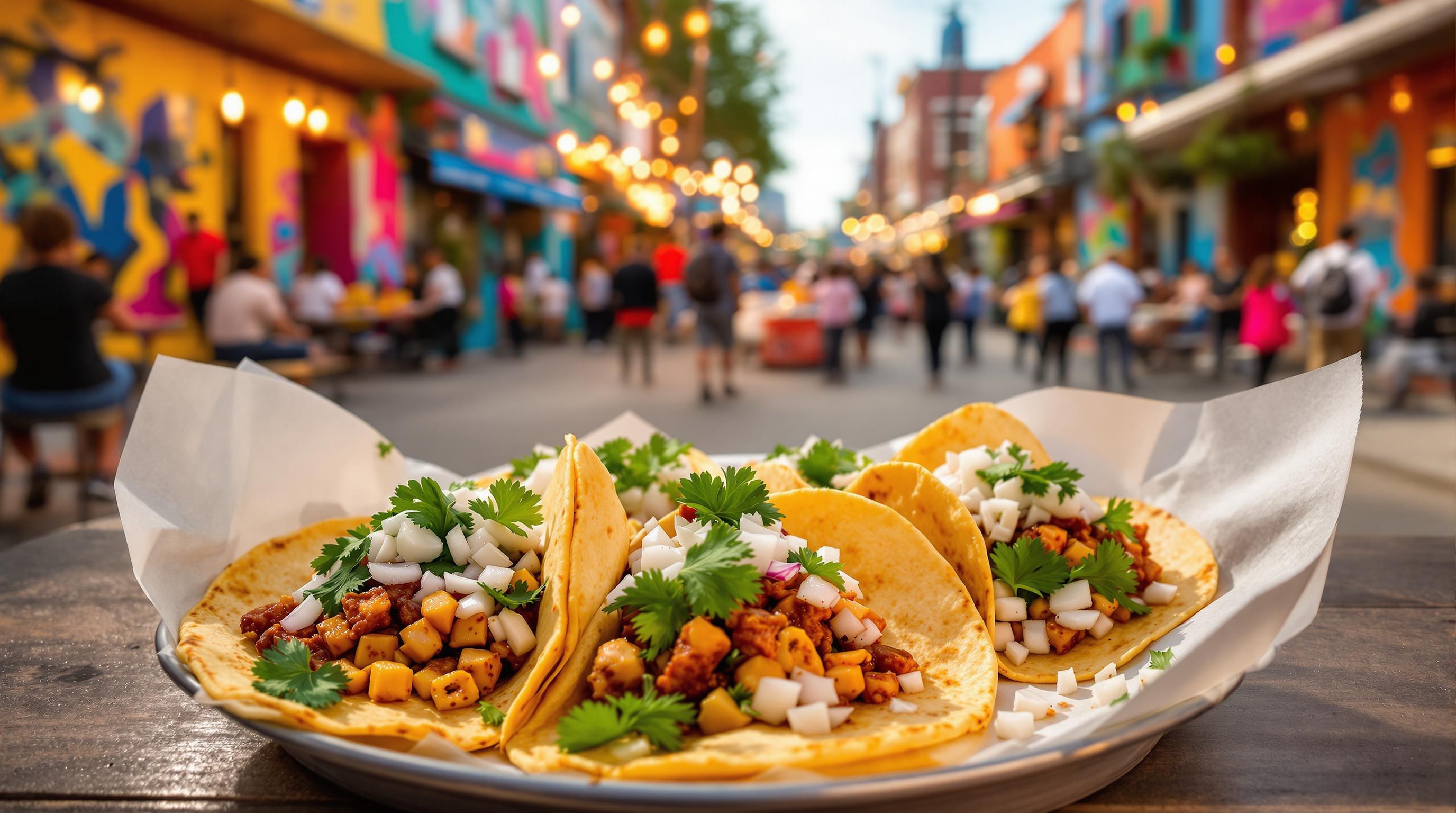The South Side of Chicago is a taco lover's dream, blending Mexican culinary traditions with local flavors. Here's why it's the best spot for street tacos:
- Rich Heritage: Mexican immigrants brought recipes from regions like Michoacán, Jalisco, and Guanajuato, creating a unique food culture.
- Top Neighborhoods: Little Village, Pilsen, and Archer Heights are home to standout taquerias like Carnitas Uruapan, Tío Luis Tacos, and Birrieria Zaragoza.
- Focus on Flavor: South Side tacos emphasize seasoned meats, slow-cooked and braised, with minimal reliance on salsa.
- Cultural Fusion: Decades of interaction between Black and Mexican communities have influenced cooking styles, adding local twists like deep-frying tortillas.
Whether you're craving carnitas, al pastor, or grilled steak, the South Side offers a taco experience rooted in history and community. Dive in for bold flavors and time-honored recipes that make this area a must-visit for food enthusiasts.
Rating Every TACO In Chicago (ft. Chef Jonathan Zaragoza)
Top Taco Areas in South Side Chicago
Three neighborhoods on Chicago's South Side highlight the rich taco flavors that have become a cornerstone of the city's street food culture.
Little Village: 26th Street Taco Hub
Known as La Villita, Little Village centers around 26th Street and is a must-visit for taco lovers [4]. El Milagro Taqueria [5] stands out with its tender, unchopped skirt steak served on freshly made tortillas.
"I think it still resonates very much with our cultural identity. … This is where we made a home and now, in my 30s, I can't imagine myself living in another place." – Elianne Bahena, lifelong Little Village resident and community organizer [4]
Another favorite, Taqueria Atotonilco [5], has been serving street-style tacos for nearly 50 years, earning a loyal following thanks to its late-night hours.
Pilsen's Food Scene
Pilsen, once a Czech and Polish neighborhood, transformed into a vibrant Mexican cultural hub during the 1960s and '70s. This shift brought incredible culinary traditions to 18th Street. Don Pedro Carnitas [5], with its 30-year legacy, is a standout for pork tacos.
Close to the Damen/Cermak Pink Line station, Taqueria Los Alamos [5] offers classic tacos paired with flavorful salsas. Meanwhile, Taqueria Los Comales [5] boasts a diverse menu with options like flank steak, barbacoa, chorizo, and lengua tacos.
Archer Heights
Archer Avenue and Pulaski Road are home to taquerias known for their regional specialties. Tío Luis Tacos focuses on barbacoa, while Paco's Tacos serves up char-grilled steak and al pastor tacos [5].
For something unique, Birrieria Zaragoza on Pulaski Road features roasted goat tacos made from organically raised meat. Zacatacos [5], originally located on Pulaski Road, offers char-grilled chicken and hearty vegetarian taco options.
Each of these neighborhoods adds its own flair to the South Side's taco scene, making it a destination for food enthusiasts.
Best Taco Spots to Try
Carnitas Uruapan's Pork Tacos

Carnitas Uruapan, tucked into a cozy spot at 1725 W 18th St in Pilsen, is famous for its mouthwatering pork carnitas. These juicy carnitas are sold by the pound (around $7 per portion) and come with their signature corn tortillas and a flavorful salsa verde. The family-run spot opens early - 9 AM on weekdays and 7 AM on weekends - making it a great choice for an early meal. Loyal customers often enjoy a side of homemade refried beans, and their warm, crispy chicharrones are a perfect addition to the meal [6].
sbb-itb-8621021
South Side Taco Characteristics
Cooking Methods
South Side taquerias bring together Mexican culinary traditions and local influences, using methods like slow-cooking, deep-frying, and braising to create distinctive flavors and textures. These approaches result in tender, flavorful meats that set South Side tacos apart.
"We deep-fry the tortillas, which is Mexican in some aspects…but deep-frying plays a big part in a lot of Black cooking... [Tacos] are not traditionally Black, but our preparation is Black: slow-cooked with cayenne and garlic powder, not oregano and chilies…. We braise our meats instead of searing them." - Taylor Mason, Owner of Taylor's Tacos [2]
These cooking styles form the backbone of recipes that have been passed down and refined over generations.
Family Recipes and History
Carnitas Uruapan showcases how deeply rooted family traditions shape South Side tacos. Their recipe traces back to the owner's grandfather's butcher shop in Michoacán, Mexico, highlighting the preservation of time-honored techniques.
"Carnitas are a lot like Southern barbecue: It varies highly from region to region, and, as I quickly discover when I press for specifics on his family's recipe, it's very secretive." - Marcos Carbajal [7]
Meat and Salsa Options
South Side taquerias focus on bold, seasoned meats as the star of their tacos, offering a different approach from traditional Mexican tacos, which often emphasize salsa.
"It's the meat that separates ours from authentic Mexican tacos... It's been our experience that Mexicans emphasize salsas. For us, the meat has to be seasoned so you get flavor in every bite, not just in the sauce." - Taylor Mason, Owner of Taylor's Tacos [2]
Here are some popular meat options:
| Meat Type | Preparation Style | Notable Characteristics |
|---|---|---|
| Carnitas | Slow-cooked | Inspired by traditional Michoacán methods |
| Carne Asada | Grilled | Packed with seasoning before cooking |
| Al Pastor | Marinated & Roasted | Features a mix of local spices |
| Braised Meats | Slow-braised | Flavored with cayenne and garlic powder |
| Specialty Options | Various | Includes papas (mashed potato) and chicharron variations |
Mexican Food Heritage
Mexican Community Impact
Chicago's South Side taco scene thrives thanks to the city's dynamic Mexican-American community. In fact, Mexicans make up more than half the population in 15 neighborhoods, mostly on the Southwest Side [3]. In 2018 alone, Latinos added $97.5 billion to the Chicago-area economy [3].
"Whether it's looking for the history of who we are in Chicago or data that help us to create better programs, we just felt that there was a lot of information missing", says Luis Gutierrez, CEO of Latinos Progresando [3].
Over time, tacos have transformed from an immigrant staple into a widely celebrated dish across the U.S. [1]. This strong cultural presence also supports a network of local suppliers dedicated to preserving these culinary traditions.
Local Ingredient Sources
What sets South Side tacos apart is the use of locally sourced ingredients and traditional techniques. Carniceria Aguascalientes on 26th Street is a standout, known for its handmade tortillas and chicharron tacos, served with your choice of red or green salsa [1]. Local vendors play a key role in ensuring tortillas and other staples retain their authentic taste and texture.
As the Mexican community grows beyond neighborhoods like Little Village and Pilsen, new suppliers continue to honor traditional recipes while adapting to evolving local preferences [3].
Conclusion
The South Side stands out as a go-to spot for street tacos, thanks to its deep Mexican-American roots and creative local influences. This mix of traditions brings bold, flavorful meats that reflect the essence of neighborhoods like Little Village and Pilsen.
What makes the South Side special is how it blends classic Mexican recipes with local flair, using unique preparation techniques and perfectly seasoned ingredients. This evolution is a result of decades of cultural interaction between the area's Mexican and Black communities.
For a true taste of this legacy, visit spots like Zacatacos or Tio Luis Tacos [8]. The South Side's taco scene is more than just great food - it's a celebration of heritage and the blending of Black and Latino cultures [2]. Whether you’re in the mood for traditional Mexican tacos or creative soul food-inspired options, there’s something here for everyone. Dive in and experience the South Side’s rich taco tradition for yourself.
FAQs
What makes street tacos on Chicago's South Side so special?
Street tacos on Chicago's South Side stand out because of their authentic flavors and traditional preparation methods. Vendors often focus on perfecting specific meats like al pastor or carne asada, using fresh, high-quality ingredients to create tacos that are packed with bold, satisfying flavors.
What truly sets these tacos apart is the local touch - many vendors bring recipes and techniques passed down through generations, blending Mexican culinary traditions with the vibrant culture of the South Side. These tacos are typically served from food trucks or small stands, offering a casual, affordable, and delicious experience that celebrates both authenticity and community.
How have Black and Mexican communities shaped the South Side's taco culture?
The vibrant taco scene on Chicago's South Side is a testament to the rich cultural exchange between Black and Mexican communities. These interactions have fostered unique culinary innovations, blending traditional Mexican flavors with soul food influences and other local tastes. This fusion has created a taco culture that feels both authentic and distinctly Chicagoan.
Beyond the food, the shared sense of community has also played a role in the popularity of street tacos. Many taco vendors have become neighborhood staples, bringing people together through food and celebrating the diverse heritage of the South Side. This cultural collaboration continues to make the South Side a must-visit destination for taco lovers.
What are the best neighborhoods on the South Side for authentic street tacos, and which taquerias should you try?
If you're looking for the best street tacos on Chicago's South Side, Pilsen and Little Village are must-visit neighborhoods. These areas are celebrated for their vibrant taco scenes, deeply rooted in Mexican culture and tradition.
In Pilsen, some standout spots include 5 Rabanitos, Taqueria Los Comales, and La Vaca Margarita Bar, each offering tacos packed with authentic flavors. Over in Little Village, also known as La Villita, you can’t go wrong with El Milagro Tortilleria, Nuevo Leon, or Mi Tierra, where the tacos are crafted with care and bursting with tradition.
Whether you're drawn by the rich flavors, fresh ingredients, or the cultural experience, these neighborhoods are perfect for taco lovers to explore!


